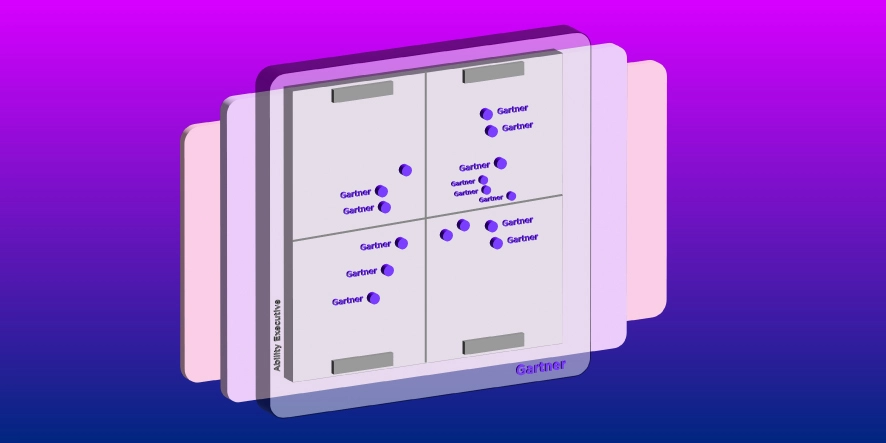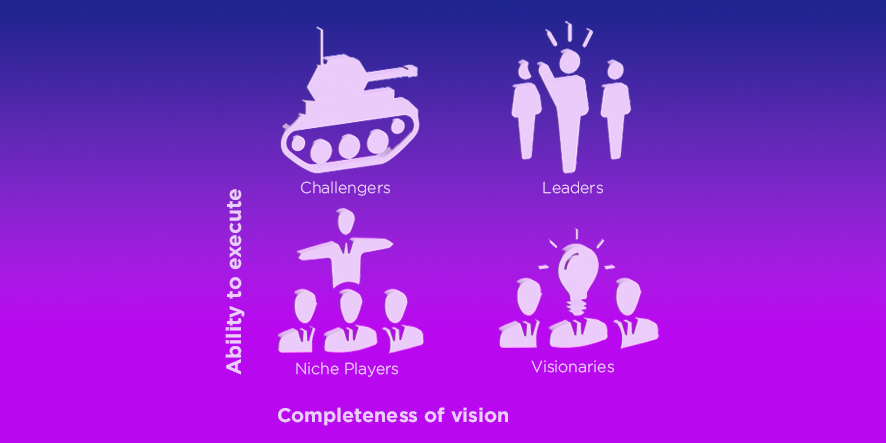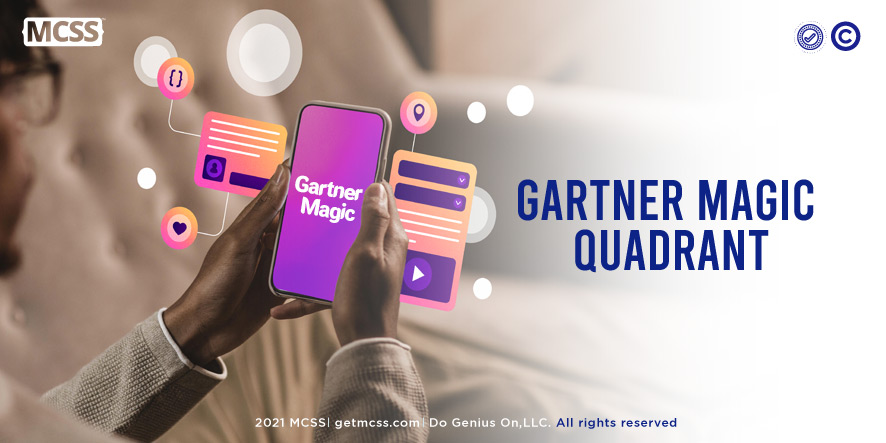What is the Gartner Magic Quadrant

The Gartner Magic Quadrant is a research methodology and graphical representation of a marketplace's direction, maturity, and participants. It provides a clear, visual framework for classifying technology providers based on their ability to execute and their completeness of vision. The Magic Quadrant is intended to help leaders in a given market make more informed decisions about the direction and maturity of providers in that market. It is often used by IT professionals, business leaders, and investors to evaluate companies and technologies in a variety of industries, including software, hardware, and services.
How does a Gartner Magic Quadrant™ work?
The Gartner Magic Quadrant is a research methodology that is used to evaluate technology companies and products. The process begins with Gartner identifying key market segments and selecting companies that it believes are the most significant providers in those segments. Gartner then conducts extensive research on each company, including interviews with company executives, customers, and other industry experts.
Based on this research, Gartner evaluates each company based on two key criteria: "Ability to Execute" and "Completeness of Vision." Ability to Execute is a measure of a company's ability to deliver on its promises and execute on its strategy, while Completeness of Vision is a measure of a company's ability to articulate its vision for the future of the market and its ability to innovate.
Gartner then plots each company on a Magic Quadrant graph, with the x-axis representing Ability to Execute and the y-axis representing Completeness of Vision. Companies that score well on both criteria are placed in the top-right quadrant of the graph, which is considered the "Leaders" quadrant. Companies that score well on one criteria but not the other are placed in the other quadrants.
The Magic Quadrant is intended to be a snapshot of the market at a specific point in time, and it is updated periodically as the market and the companies in it change. It is important to note that Gartner's evaluation is an opinion of a specific point in time, and not a prediction of future performance.
What are the 4 quadrants of Gartner?

The Gartner Magic Quadrant graph has four quadrants:
- Leaders - These are companies that have the highest scores for both "Ability to Execute" and "Completeness of Vision." These companies are considered to be the most well-rounded and have a track record of delivering on their promises.
- Challengers - These are companies that have high scores for "Ability to Execute" but lower scores for "Completeness of Vision." These companies are considered to be strong in their current market positions but may not have as clear a vision for the future.
- Niche Players - These are companies that have lower scores for "Ability to Execute" but higher scores for "Completeness of Vision." These companies may have innovative products or technologies, but they may not have the same level of market presence or resources as the leaders.
- Visionaries - These are companies that have lower scores for both "Ability to Execute" and "Completeness of Vision." These companies are considered to be less mature or may be newer to the market, but they may have promising visions for the future.
How do an enterprise get into the Gartner Magic Quadrant?
Enterprises typically get into the Gartner Magic Quadrant by meeting certain qualifications and then being selected by Gartner for inclusion in the research. The exact qualifications and selection process can vary depending on the market segment and the specific Magic Quadrant being produced.
Generally speaking, Gartner will look for companies that meet certain revenue and customer base thresholds, have a product or service that is relevant to the market segment in question, and have a track record of delivering on their promises. Gartner may also conduct extensive research on the company, including interviews with company executives, customers, and other industry experts, to evaluate their "Ability to Execute" and "Completeness of Vision".
It's worth noting that being included in a Magic Quadrant is not a guarantee of success or a recommendation by Gartner, but rather a representation of a company's position in a specific market at a specific point in time.
Additionally, Gartner invites companies to participate in the research and complete an extensive survey, it's important for the company to provide accurate and relevant information to Gartner.
What requirements or characteristics must a company have to be included in the Magic Quadrant?

The requirements or characteristics that a company must have to be included in the Gartner Magic Quadrant can vary depending on the market segment and the specific Magic Quadrant being produced. However, generally speaking, Gartner will look for companies that:
Meet certain revenue and customer base thresholds, which vary depending on the market segment and the specific Magic Quadrant being produced.
- Have a product or service that is relevant to the market segment in question.
- Have a track record of delivering on their promises.
- Have a certain level of market presence and resources.
- Have a clear vision for the future of the market and ability to innovate.

